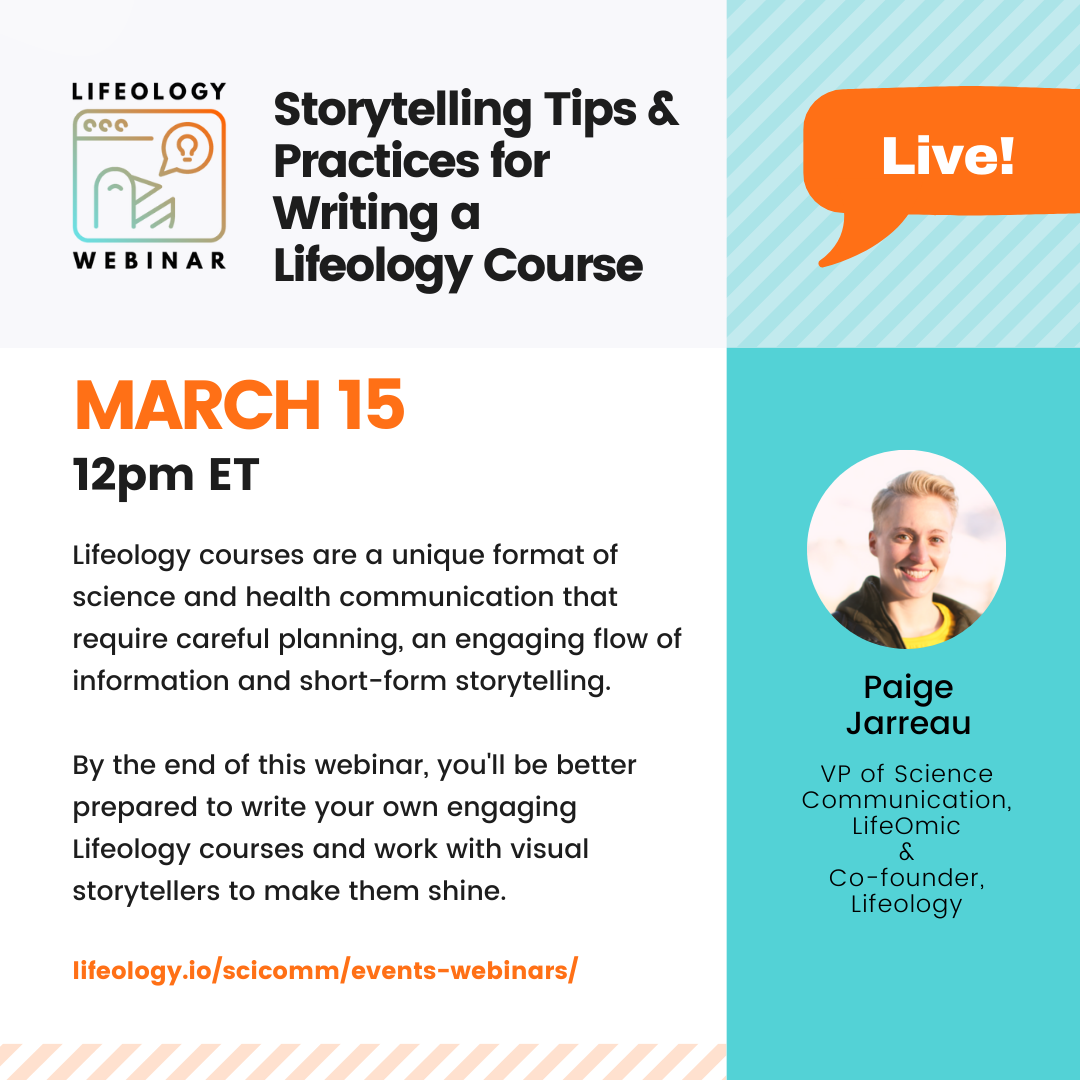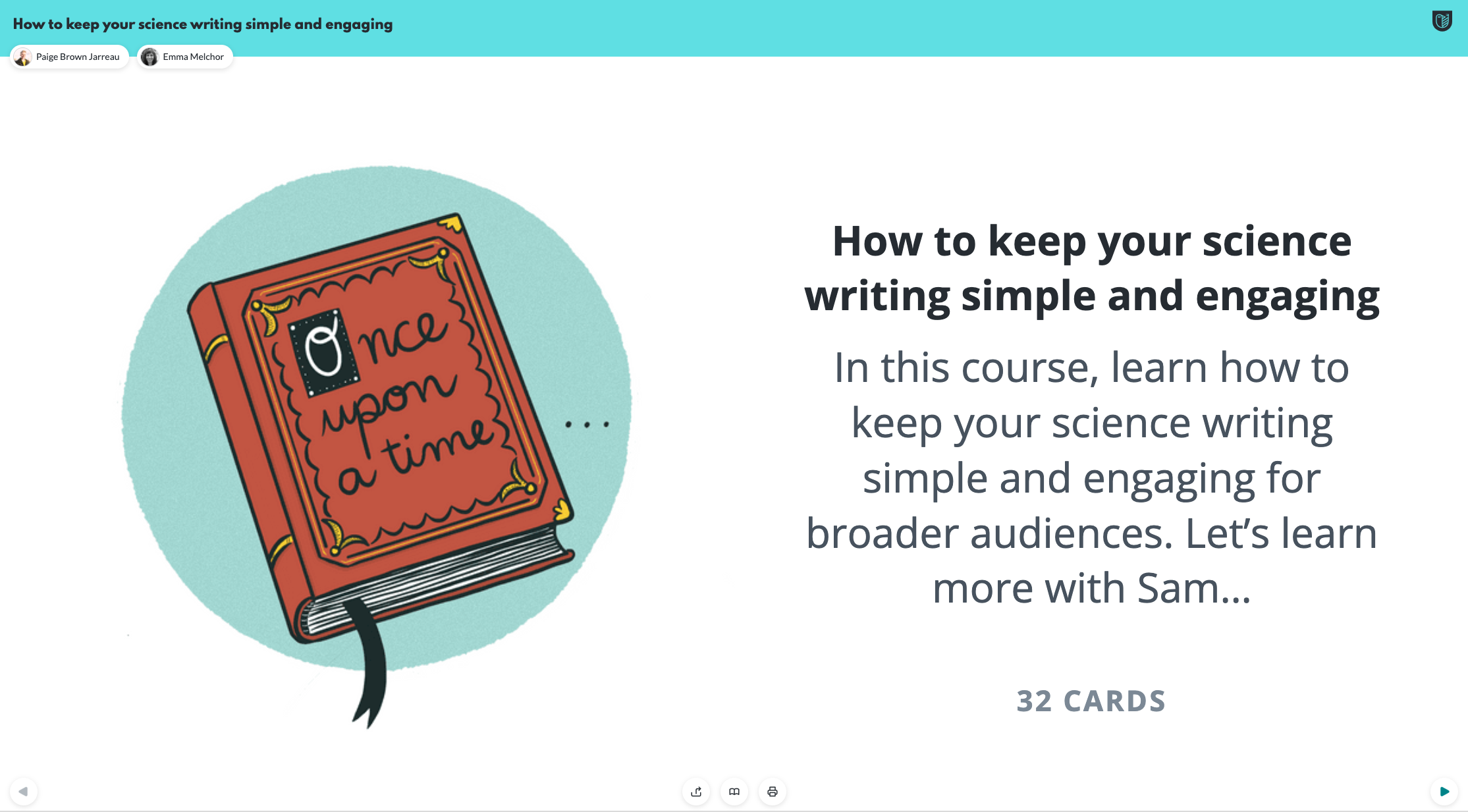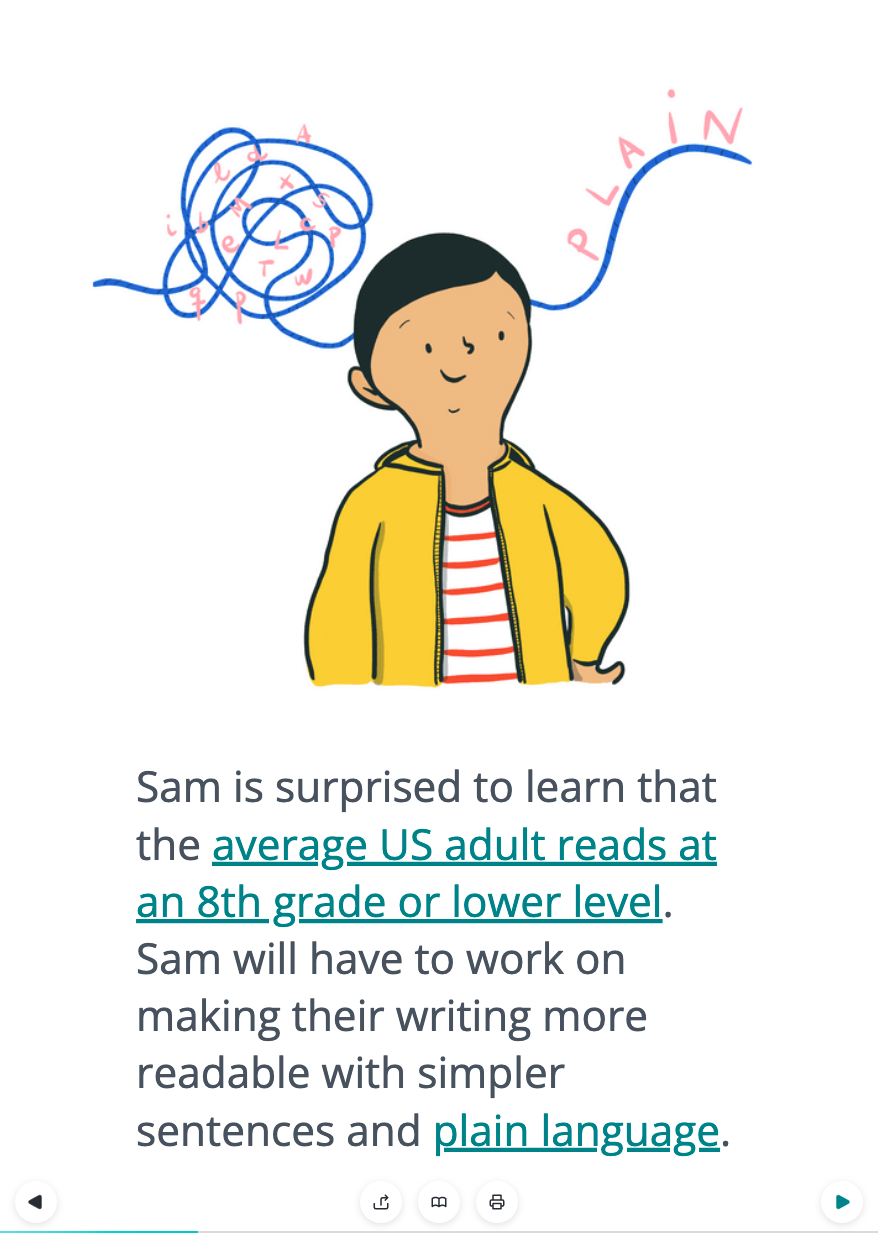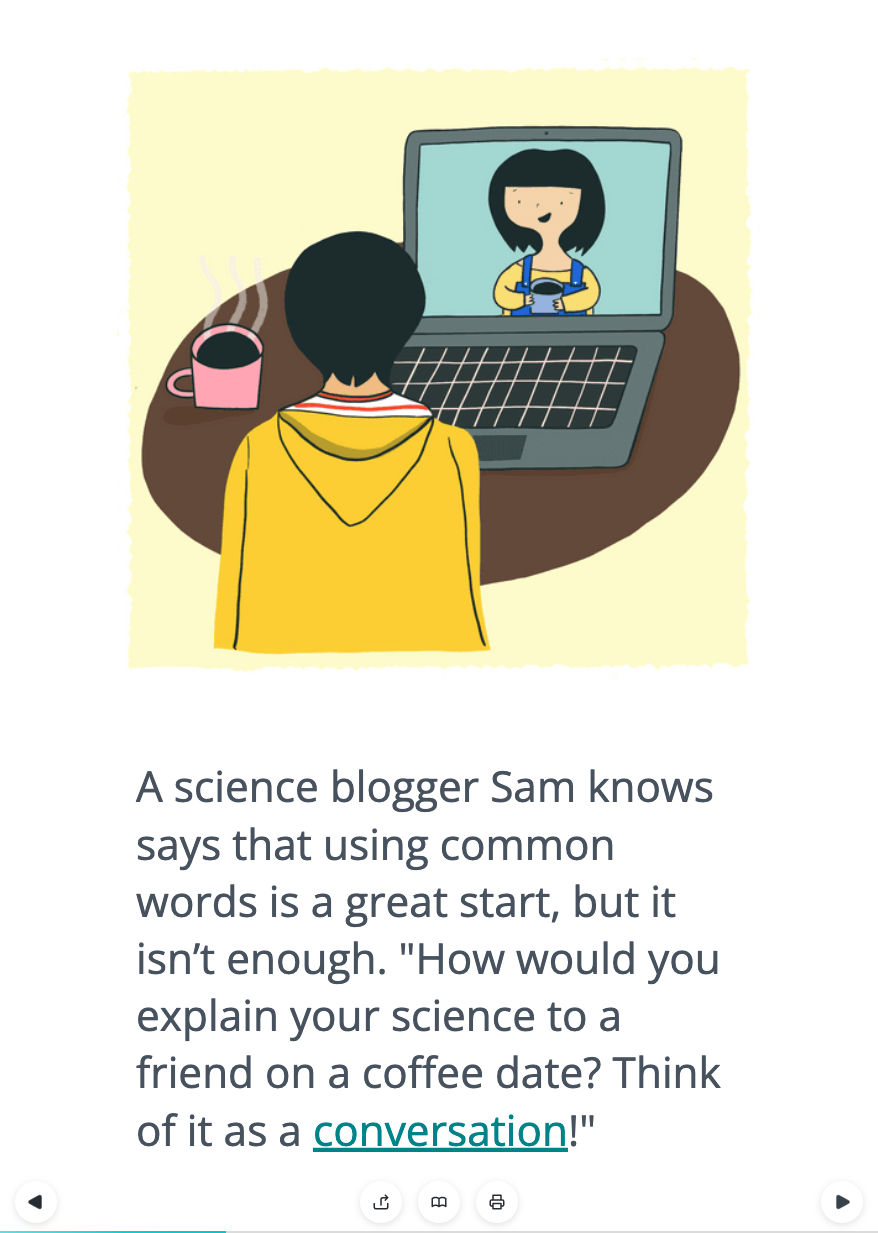This month, the Lifeology SciComm Program has a new SciComm course to help you keep simplicity and engagement in mind when you’re telling a science story! Continue reading to learn more about the course and an upcoming webinar on storytelling. You can also read what the creators of this month’s course have to say about the creative process toward the end of the post.
Screenshot of a card from the “How to keep your science writing simple and engaging” course.
About the Course
“How to keep your science writing simple and engaging” brings you on a journey with Sam, a scientist who just discovered a passion for writing for the public. They find it more difficult than they originally thought to make their science writing simple yet still fun.
So they go on a journey to talk to friends, colleagues and other writing experts. Learn more with Sam in the course now! Some strategies include removing jargon, considering the reading level of the audience, and using stories! Everyone can relate to stories, but how do you write a good one?
Have you ever read a good book or article on the internet that made you forget everything else you were thinking about? While you are reading, you are completely engrossed in the content. Maybe you even begin to picture what the writer is talking about in your own head. What about the writing kept you so engaged?
Sam reminisces on the way stories make them feel, and they are eager to learn how they can keep their readers engaged, too. Sam learns that they must keep their story focused so that it builds toward the main point of the story. To do this, they must consider the parts of the story and how they fit together. They also have to focus on making the storytelling an experience for the reader with engaging characters who reveal their emotions and go through some type of inner change.
Screenshots of three cards from the “How to keep your writing simple and engaging” course.
We have five senses, and Sam learns to use them all to draw readers in. Quickly, Sam starts to feel like writing with all these storytelling strategies in mind is not so simple, which is half the point of the course and Sam’s lesson! But that’s the thing about storytelling–it already simplifies the science because it frames the content in a way that is relatable and memorable to the reader. By combining storytelling with other strategies such as removing jargon, you are sure to have science writing that is both simple and engaging!
View the course “How to keep your science writing simple and engaging” now to learn more! The illustrations help bring Sam and their journey to life. The course is written by Paige Brown Jarreau and Emma Melchor.
Paige is a scientist turned science communicator and SciComm scholar–who also happens to be a co-founder of Lifeology. She is passionate about evidence-based science communication that combines art and storytelling. Emma is a freelance illustrator, medical doctor, and postdoctoral researcher with a passion to bring science and healthcare to everyone.
Creating the Course
“This was a fun course to write! I wanted to be sure to practice what I was asking the reader to do in this course in terms of making one’s writing more simple while also more impactful and engaging. That boiled down to telling the story of a protagonist (really, a stand-in for the reader!) who would face a challenge and subsequently change their perspective about how to best communicate science.
As I brainstormed potential story arcs, the children’s book “Are You My Mother?” came to my mind! I imagined a protagonist (Sam) who, like the little bird in “Are You My Mother?”, would go on a journey and talk to a lot of other characters along the way to ultimately reach their goal. In the course, Sam talks to a lot of different people who have insights about how to best communicate science. In the end, the true answer is an amalgamation of insights from people in different fields!” – Paige Brown Jarreau
A Webinar
And if you want to learn even more about science storytelling, you’re in luck! On March 15th at 12pm ET, we have a Lifeology live webinar! The webinar, “Storytelling Tips & Practices for Writing a Lifeology Course” is also presented by Paige. Whether you are working on a Lifeology course or another project, you will walk away from this webinar with some great storytelling tips to use. You can register now.









